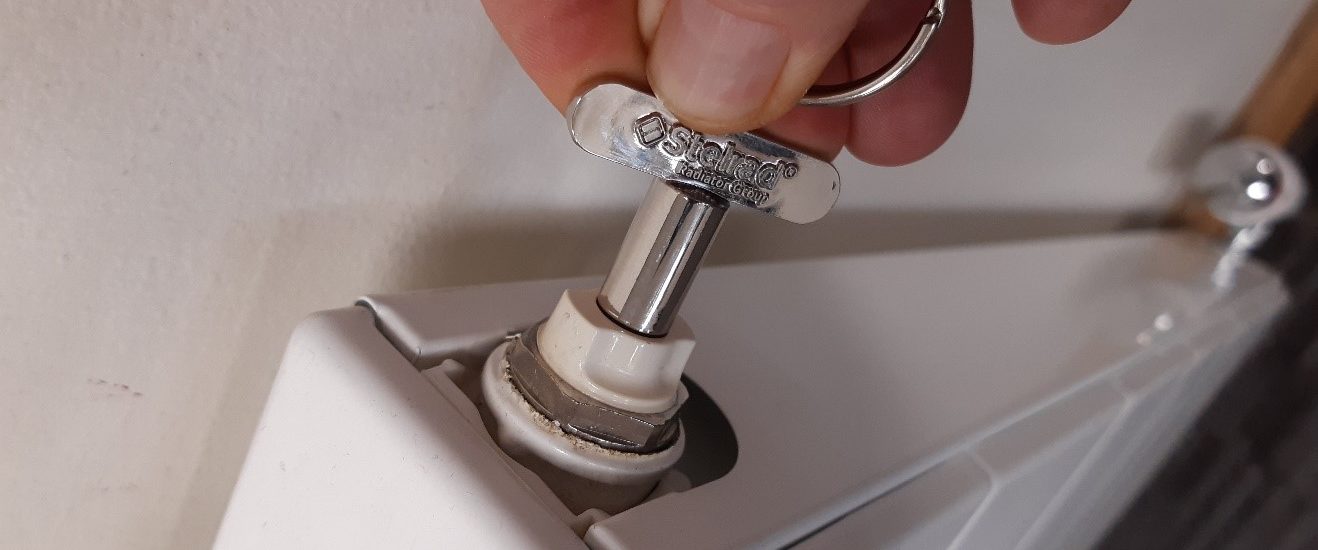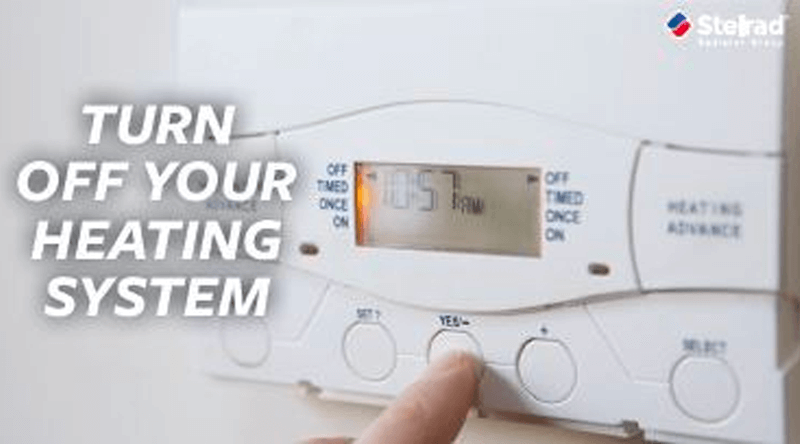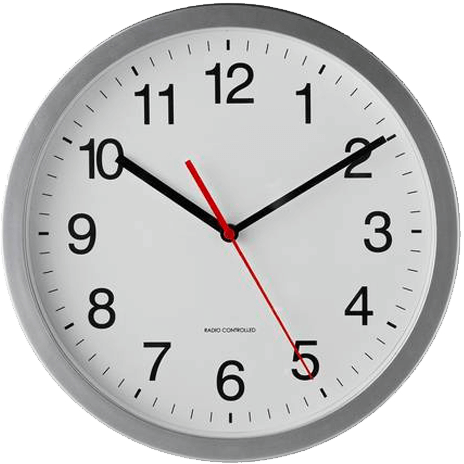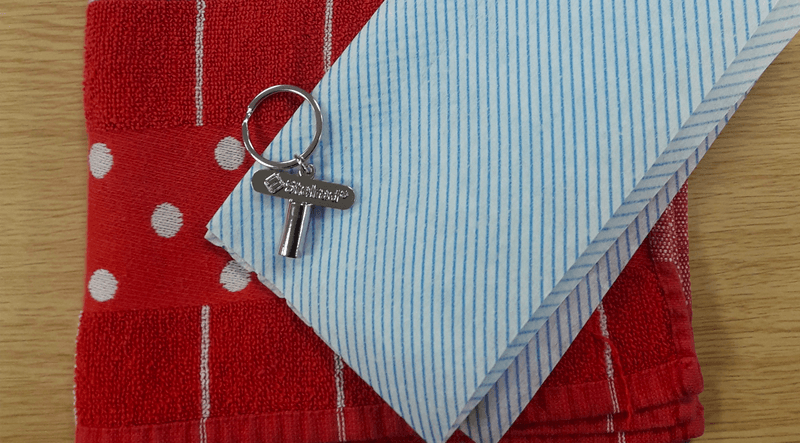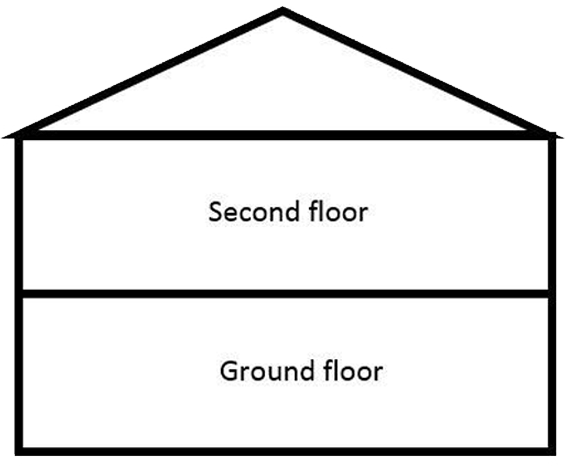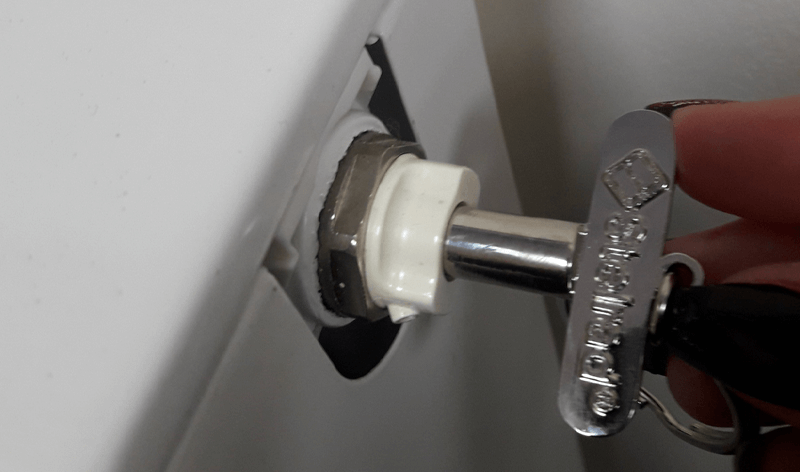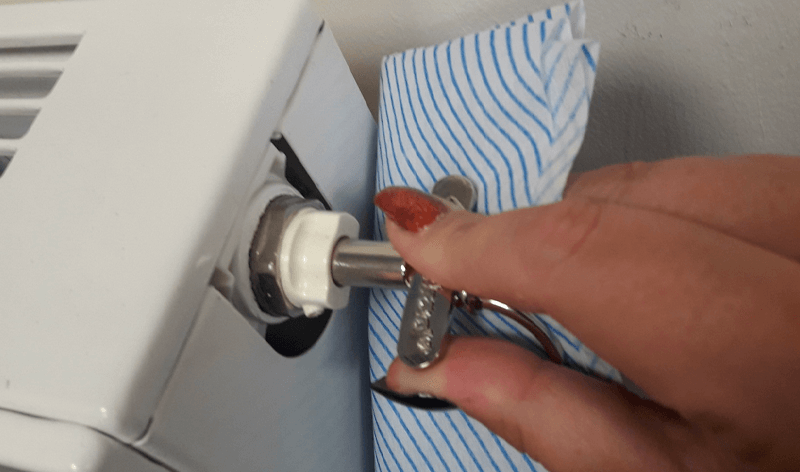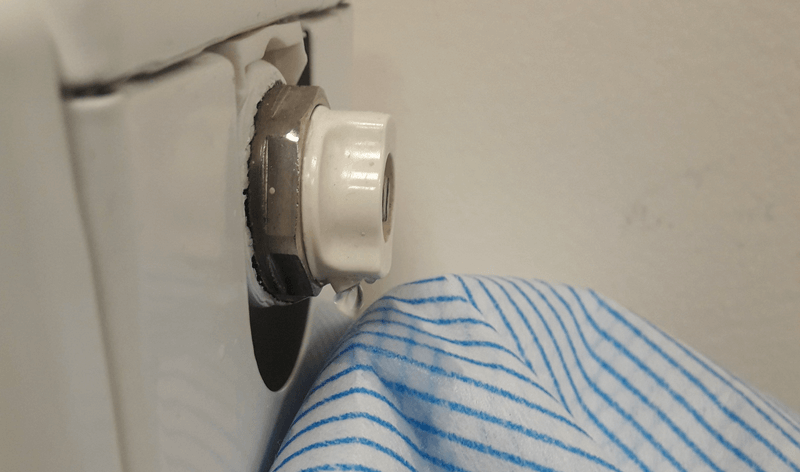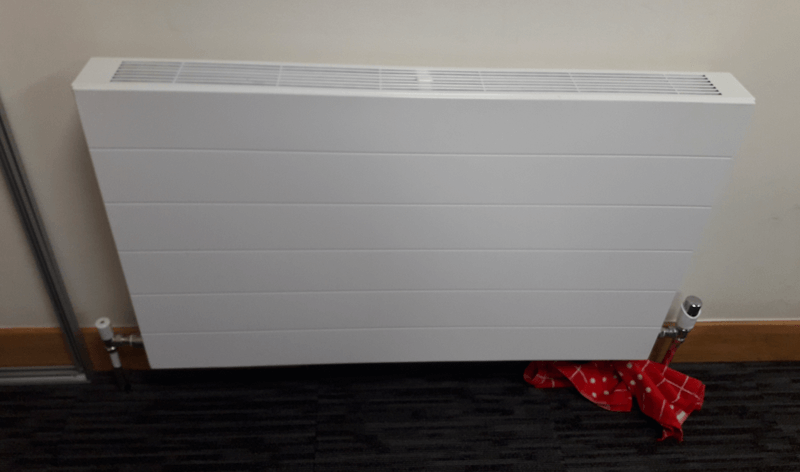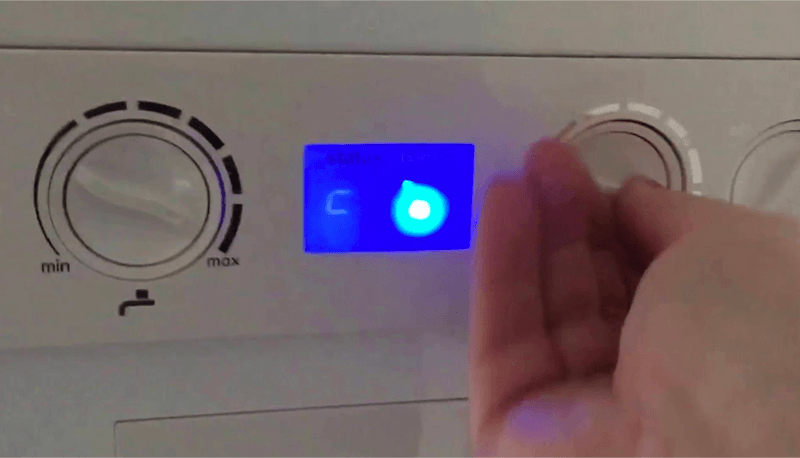Bleeding a radiator and deciding on when to do this are essential for efficiently heating your home. It can help save you money on your energy bills, whilst also helping you do your bit for the environment by using them only when needed. Your radiators are just as important as your boiler, so if you have an inefficient heating system, you may not get your money’s worth during the colder days and months.
No Stelrad electric radiators require bleeding and this should never be undertaken with any of our electric series. In the unlikely event that one of our electric radiators leaks this should be replaced. If you are using other electric radiators consult their instructions to determine if and how to bleed them.
Understanding how to bleed a radiator is key to ensuring its health and longevity too, but do you know where to start and how to do this correctly? In this step-by-step guide, you’ll find out how to bleed your radiator, why doing so is important, when to do this, and what you’ll need before starting. As the UK’s leading supplier of radiators, at Stelrad we know that regular maintenance of your radiators is important to get the most out of them and ensure efficient use, so use our guide to understand more about this simple, yet important, task.
What Does Bleeding Radiators Mean for Homeowners?
Bleeding radiators is the act of removing unwanted air from the heating system that builds up over time. So, how does air get into your radiators? Unwanted air is a side effect of the heating and cooling of water within your heating system. Air bubbles are created during normal use, so over time this air will congregate within the system as it has nowhere to escape to – this is where bleeding the radiators comes in.
A heating system will have a mix of chemicals to ensure that the inside of the system doesn’t rust. However, the build-up of air can be an additional factor in whether your heating system will stay rust-free. A black magnetite sludge may appear in your heating system that can settle at the bottom of your radiators and impede water circulation around the system. With air naturally created with use, this can also contribute to poor circulation, meaning noticeably colder radiators when turned on. The combination of air, water and metal is a recipe for rusting, so bleeding the radiators not only ensures better heating efficiency, but also prevents adding to potential rust build-up and anything worse such as leaks or burst pipes.
As a homeowner, you’ll want to ensure you are bleeding your radiators properly and regularly to avoid this happening. The last thing you want is to invest in designer radiators that do not last due to poor maintenance, so doing your bit with this quick task every now and again can ensure better care.
When & How to Bleed a Radiator
Bleeding your radiators doesn’t need to be a laborious task and is not something you will need to do every day or week. Even if you have old radiators that have seen plenty of use over the years, as long as you’re regularly maintaining them, bleeding them doesn’t have to be done constantly – although you may want to consider upgrading to modern energy-efficient radiators if you’re looking to change. Here are some common questions to ask yourself before deciding to bleed a radiator when your heating system is turned on:
- Is the radiator turned on? Check the valve to ensure it is
- Is the top section of the radiator cool to the touch, while the bottom of it is warm?
- Does the entire radiator feel cold?
- Do you hear gurgling noises as your heating system is running?
If you notice cold spots in your radiator, it often indicates that air is trapped inside which has risen to the top. Therefore, you need to release (or bleed) the air trapped in your radiator. This allows the radiators to heat effectively when in use again. If the entire radiator feels cold, it could indicate a bigger issue, but you should always check the radiator valve is on and allow time to heat up. Any radiator noises such as gurgling or popping sounds you can hear when it’s turned on and warming up may indicate air in the system too.
The good news is many of the above symptoms can be quickly resolved by bleeding your radiators. As it is a natural occurrence within the heating and cooling of water, it is a very common problem experienced by all radiator owners at some point. You can easily fix this with a few simple tips, but how often should you be checking your radiators and then bleeding them?
You should consider bleeding radiators in your home at least once a year – each one in your property. You may be surprised how much air you can get out of radiators that seem to be working normally too, so addressing the issue before it gets worse is ideal. As you may have a few months of the year, such as during the summer, where you do not use your radiators much, if at all, you may want to bleed them when you start using them again.
We recommend doing so during the colder months as this will make it much easier to diagnose any potential issues as you will be using your radiators regularly. Of course, you can choose to bleed your radiators at any time of year and as often as you like, but at least once a year should be sufficient.
Bleeding a Radiator – Should I Call a Professional
You may notice numerous cold or lukewarm radiators in your home. If your radiators are not getting hot, then unfortunately it could mean there’s a larger issue with your home heating system even if you have bled your radiators. We have a friendly team here at Stelrad to help should you need further advice on your radiators, but you should contact a local plumber to see if your boiler is the issue or to see if you need to flush your heating system completely.
Another sign of an inefficient home heating system is when the radiators on the ground floor are hot, but the ones in the upstairs rooms are not. This can suggest water circulation issues in your home heating system, where the pump may be struggling to move hot water through the system. If you notice this while bleeding your radiators, we recommend calling a professional to check your full system. It’s better to have peace of mind with your radiators and boiler if you sense a bigger issue.
HOW TO BLEED A RADIATOR
After diagnosing the issue, you will need to release the bleed valve on your radiators to bleed them. You may want to ensure you have your radiator keys/a flathead screwdriver and cloths or towels to hand before you start and follow these steps to avoid any mishaps:
Step 1 – Turn Off Your Heating System
- Ensure your heating system is turned off so that the pump is not running.
Step 2 – Wait for The Radiators To Cool Down
- Once identifying which radiators are affected, wait for the radiators to cool down.
- This is to ensure any hot water doesn’t harm you whilst bleeding the radiator.
Step 3 – Have Your Radiator Keys and Cloths/Towels Ready
- Have your old cloths and towels ready before starting so that you can mop up any spillages.
- Also, have your radiator key or a flathead screwdriver so you can open the valve easily.
Step 4 – Start at The Bottom Of The House
- Start with the ground floor radiators first, before making your way up (unless you are in a flat or bungalow).
Step 5. – Locate The Bleed Value
- Locate the bleed valve, which is usually at the top of the radiator on one end. The ‘key’ should fit correctly over the square release nipple. Don’t turn the key yet; make sure your work area is covered with towels, and you have a clean cloth handy.
Step 6. – Turn The Bleed Valve Key
- Carefully turn the bleed valve key (or flathead screwdriver) anti-clockwise a quarter turn. Hold the dry cloth to the valve to soak up the water and try to protect the wall. You may hear a hissing sound until all the air escapes.
Note: If the whole bleed valve is turning at once, you will need to hold against the turning direction with a spanner, as this will remove the vent plug and cause damage.
Step 7. – Release The Air And Close The Valve
- Once all the air has been released, water will start to run out of the hole; wait for a steady stream of water without any spluttering. You can then close the valve in a clockwise direction. This shouldn’t take longer than 20-30 seconds to do per radiator, but may take longer with larger radiators.
Step 8. – Clear Up Spillages
- Make sure you clean up any spilt water, wiping down the radiator. This will help to prevent any rust around the valves. Cleaning the radiator is important here.
Step 9. – Turn The Boiler Back On
- Once you have completed steps 1 – 8 for all radiators in your system, you need to check that the pressure setting is correct on the system if you have a Combination boiler.
- Turn the heating back on and check all radiators for cold spots, leaks, and any drips around the bleed valve. You may need to bleed some radiators again once the water has run through the system. You can then turn the boiler back on.
Step 10. – Check The Pressure
- If you have a sealed pressurised system, such as a combi boiler, check the manufacturer’s recommended pressure setting is correct. Normally 1.2 to 1.5 Bar. By bleeding your radiators, the overall pressure will have been lowered.
- If the pressure is too low, you may need to top up your boiler with water. If you’re not sure how to do this, or you cannot locate the boiler manual, it’s best to call in a professional to do so.
HOW TO BLEED A VERTICAL RADIATOR
Bleeding a vertical radiator is an easy task that can help make sure your heating system is running efficiently. If air gets trapped inside the radiator, it can cause cold spots and reduce its effectiveness. To bleed a radiator, you need to turn off your heating system, locate the bleed valve (usually at the top of the radiator), and use a radiator key or screwdriver to open the valve. Have a cloth or bucket ready to catch any water that comes out.
When you hear a hissing sound, it means the trapped air is escaping. Wait until water starts to flow out and then quickly close the valve. If you still hear hissing sounds, you may need to repeat the process until all the air is released from the radiator.
DIFFERENT TYPES OF RADIATOR BLEED VALVES
There are a few different types of radiator bleed valves, each with their own unique features and benefits. From the basic squared-headed radiator key to the newer smart radiator valves, it’s good to be familiar with the different types of radiator bleed valves available. Here’s a quick rundown of the most common types:
- Square-Headed Radiator Key – This is the most basic type of bleed valve and can be used to bleed most radiators. It has a square-shaped head that fits into the bleed valve and can be turned with a spanner or pliers.
- Radiator Key with Extended Shaft – This type of bleed valve has an extended shaft, making it easier to reach valves that are difficult to access.
- Self-Sealing Radiator Valve – This type of valve has a self-sealing mechanism that prevents water from escaping when the valve is opened. It can be used with a standard radiator key and is ideal for those who want to avoid any mess when bleeding their radiators.
- Automatic Bleed Valve – This type of valve is installed on the radiator and automatically releases trapped air. It doesn’t require any manual intervention and can help to maintain the efficiency of your heating system over time.
- Smart Radiator Valve – This is a high-tech option that allows you to control the temperature of your radiators remotely using a smartphone app. Some smart radiator valves also include automatic bleeding functionality.
FIND EFFICIENT RADIATORS AT STELRAD
We hope our step-by-step guide for bleeding radiators has provided some useful and comprehensive guidance on when and how to bleed radiators correctly. Bleeding radiators are an important part of radiator maintenance and a way to ensure the efficiency of your heating. As you can see, you won’t need a professional to do it, and it won’t take too long to complete, depending on the number of radiators your home has.
For more information on bleeding radiators, read our FAQs below. If you are looking to replace ageing radiators or looking for something that matches your home design and style better, you’ve come to the right place. Discover Stelrad radiators today, including standard radiators and vertical radiators, and contact us for more information.
How do you bleed a radiator – FAQs
How to bleed a radiator without a key?
If you don’t have a key for bleeding radiators, then you can use a flathead screwdriver. Using one of these is a good alternative and will allow you to turn the small slot on the valve. However, at Stelrad we advise you should get a radiator bleed key. You can get these in most DIY shops. Even though you can bleed a radiator without a key, it’s important to have the right tools in any case to ensure the valve is shut properly.
When to Bleed Radiators?
When to bleed radiators is a common question we get. In short, at least once a year – ideally twice. However, it’s also advised to bleed radiators after you have had any serious work undertaken on the heating system such as a replacement boiler or replacement radiators for example, or if you’ve had a radiator removed for decorating. Anything that may have necessitated having your heating system drained down.
Which Radiator to Bleed First?
Which radiator to bleed first is another common question. When you have two or more floors in your home, you always should start with bleeding the down stairs radiators first. Even though each radiator is drained as a separate entity as you go, starting on the ground floor is key. Once you’ve bled all the downstairs radiators you move on to the upstairs and so on. All the way to the highest point.
We don’t recommend that you bleed just one radiator – it may seem that one is cold more than the others, but you may be surprised how much air you manage to extract by bleeding ones that seem fine to the touch.
Can you bleed a radiator when the heating is on?
To avoid being scolded when water escapes from the radiator we advise you to switch off your central heating and let the system cool before you bleed the radiators.
How long does it take to bleed a radiator?
This can vary, depending on the amount of air that needs to be released from the radiator, the size of your radiator and whether you have all your kit ready. Typically, it takes 30 – 60 seconds for a radiator to be bled of air, but don’t be surprised if it’s a few minutes for large radiators, especially on older systems.
What does ‘bleeding’ radiators do?
It takes the unwanted air out of the system and allows the space the air was taking up to fill with water. This will help to ensure that you have the best possible water circulation in your heating system and a more efficient system.

